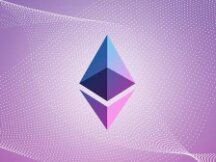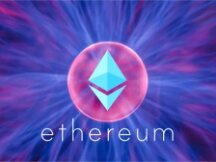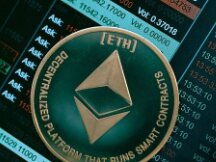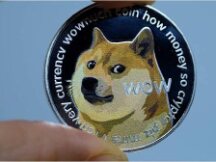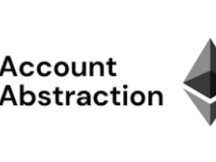Polkadot growth will increase 147% by 2021, more than Ethereum, Cosmos and Solana
How can technology platforms increase and increase their long-term value?
According to a16z, the key model for the value proposition in the Web3 protocol is the similarity of support between developers and users. This usually translates into a good idea of code development and application usage. On the other hand, the continuous development of policies supports the development of general applications and, on the other hand, the widespread use of the applications encourages the further development of new procedures.

This great idea is different from the model of capturing advertising rates on Web2 platforms like Amazon, Youtube or Uber. The value of the Web 2 platform is typically generated by the content developers, but only a fraction of the revenue goes to the content developers. To manage and increase long-term value, the Web 2 platform typically encourages content creators to keep creating useful content for the long term.
In contrast, the support mechanisms for the Web 3 platform are more straightforward, in part due to the greater transparency of open source software development. The concept of this promotion is as follows. The application is developed by the open community based on the Web3 protocol. As these apps are received by users, more money comes back into the contract. Thus, the results were entered at the procedural stage. This usually results in the highest standard to support new applications. As these new applications are received by more and more users, developers are encouraged to develop through the "configurable" Web3 protocol. With the development of Process 1, continuous improvement is the key to creating a lasting effect that “spreads the cake” over time.
However, few analysts are working on process improvements with the long-term goal of implementing the Web3 protocol. In fact, most of the analysis focuses on the measure of the chain used (such as number of portfolios, number of applications, cash flow, packaging industry, public thinking or media). Although most analysts agree on the importance of policy improvements for the long-term implementation of Web 3 protocol, this information is still generally viewed as a solution to problems. .
What is not: Quality improvement measures
To bridge this gap, Santiment and CoinGecko are providing custom symbols for development. These metrics attempt to automatically capture the progress of code development in the GitHub repository on a project basis. According to a recent report from Galaxy Digital, Outer Layer 1 is approaching the code development stage of Ethereum. Recognizing the complexities of creating value, the report provides a consistent comparison of text across key GitHub libraries as a representative goal for the arts.
Another recent announcement from The Block provides the basis for comparing Procedures 1. This report recognizes the importance for developers to understand size. This report uses social media to stream static images of Github and Discord files as a proxy for developers. However, the absence of these two reports is a synthetic and vertical understanding of continuous improvement. To resolve this issue, let's identify GitHub open source code development in terms of:
Performance improvement: includes code numbers on GitHub
Developer Community: Counts the number of developers who have contributed at least one code.
Below, we use this metric as part of a comparison of the top 3 four websites (still by age): Ethereum, Cosmos, Polkadot, and Solana. The same method can be used for other Web3 protocols to increase traction.
Protocol development
The overall improvement in health and the consistency of the four contracts. Since 2014, Ethereum has run its best engine, and the development of Cosmos, Polkadot and Solana started to develop well after 2018.

Solana has had a monthly donation figure (around 500) for the past three years, but Polkadot is growing in 2021. In this regard, Polkadot overtook Cosmos in the first quarter of 2021 and stands alongside Solana in the quarter of 2021. The increase in the development of the Polkadot protocol occurs in the period published before the first Parachain competition in November 2021. At the same time, the Cosmos appears to maintain a constant growth rate over the long term.
These patterns are similar when comparing next year's grants. In this sense, compared to Cosmos, Solana and Ethereum, Polkadot's performance will increase further in 2021.

Next, let's take a look at the size of the program, measured by a row of supported numbers (added or changed). Considering the difference between programming languages, the greater the engagement, the more often the code changes. Thus, the size of the attribution code can be used as a reasonable representative of real numbers. In this sense, compared to Cosmos, Polkadot and Solana, Ethereum is a fact that enjoys a wider service. However, it's important to note that Polkadot and Ethereum have both experienced significant differences over the past year. This is consistent with the values above for the sum of the numbers involved.

Protocol developer community
The development agency is active for each of the four renewal agreements. Ethereum has nearly 250 developers each month, while Cosmos, Polkadot, and Solana also have around 50. Fortunately, Polkadot, Cosmos, and Solana have recently become popular among developers for months. This is in line with the current migration of capital and skills from Web 2 to Web 3.

The rapid growth of the growing community is good news for the blockchain space. The developers will continue to work hard and support continuous development.
Ecosystem view
In other words, the process itself only creates value if there is an ecosystem of prosperity, efficiency and application. These application ecosystems are developed by the open community as part of the contract itself. In order to maximize the growth of the app ecosystem, we removed ① the top 300 CoinGecko positions by market capitalization that affects each process ecosystem (Cosmos, Polkadot and Solana), ② cross-chain projects. As a result, as of November 1, 2021, 15 positions in the Cosmos ecosystem entered the top 300, 9 positions in the Polkadot ecosystem entered the top 300 and 13 positions in the Solana ecosystem entered the top 300. Ethereum n 'does not include this comparison. . The reason for this is that, given the rapid and massive growth of the Ethereum ecosystem, it is impossible to include all of the new work currently under development of Ethereum.
Ecosystem development activities
All three ecosystems were stable, but the Cosmos ecosystem stood out. The figure below shows the platforms and applications developed by our company which have given rise to a lot of development work. This growth will continue for some time.

By expanding, by comparing funding from year to year, the improvement of the Polkadot ecosystem is reinforced each year, in particular compared to the Cosmos and Solana ecosystems. Likewise, the strengthening of the Polkadot game ecosystem will be completed ahead of the first Parachain competition in November 2021.

Integration (measured by adding or changing policies) is a significant improvement that increased in the Solana (9%) and Cosmos (5%) (32%) ecosystems compared to the previous year. These benefits are based on the difference in funding mentioned above.

Community of ecosystem developers
In terms of developing the community of ecosystem developers, our ecosystems seem to be attracting more and more developers, especially the development of the Solana and Olkadot ecosystems. A few important things can be played out, but one potential explanation for this adoption is that application development for the Solana and Polkadot blockchains is completed in Rust, the developer of words like coding. Rust is a coding language well known to developers in the community. This will make it easier for developers to create multiple applications, which can support the growth over the years in the development of the Polkadot and Solana ecosystems.

Therefore
Improving continuous numbers is critical to managing the long-term cost of Web Protocol 3. Aside from the hype surrounding the Web3 Protocol, the policy improvements for all major policies and their ecosystems are strong.
From a consensus perspective, both Polkadot and Ethereum show a real increase in the number and size of partnerships. At the same time, community developers saw health across all major disciplines, and Ethereum clearly recognized the community's largest and most active producers. Currently, Ethereum runs the best engine among all the other major contracts.
From the point of view of the application ecosystem, the functional improvement of the Polkadot ecosystem strengthened the line with the recent Parachain auction. At the same time, the development communities of the Solana and Polkadot ecosystems have become more efficient due to the relative ease of developing applications of the two blockchains.
Simply put, developers will continue to have "the big pie" with Web Design Protocol 3. This is good news for the application ecosystem built on top of the Web3 protocol.

Scan QR code with WeChat

